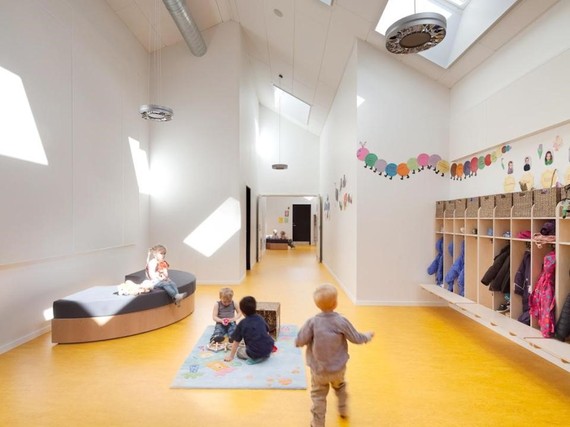While global leaders address the climate challenge at the COP21 conference in Paris, another challenge - that of healthy buildings - is being somewhat overlooked.
Climate challenge: buildings are part of the solution
Around 200 countries have currently submitted their climate commitments - the Intended Nationally Determined Contributions (INDCs) - which lay the foundation of the 2015 climate agreement. As it looks now, however, we will not be able to stay on a 2-degree course, and this is alarming.
If we take a closer look, though, at today's big energy consumers and greenhouse gas emitters, then the future does look somewhat brighter, because there are areas here where real change can happen quickly and effectively. In Europe, buildings account for 40% of total energy consumption and 36% of carbon emissions. A greater focus on the potential of energy savings in buildings would make a considerable impact as we strive to cut both the world's use of energy and its carbon emissions. Increasing energy efficiency in buildings is tangible and the effects are felt fast. While energy infrastructure and power plants can take decades to construct, building renovation can happen in 6 months, with savings taking place from the first day of use. That is why I'm pleased to see that a Buildings Day is on the agenda for the first time at the COP21 on 3rd December.
What we need though, are triggers in the market to kick-start and accelerate a user-driven energy efficiency movement, with the resulting increase in volume seeing a prompt pay-off in energy and carbon-emission accounting. In fact, this is what a European survey, the Healthy Homes Barometer, has also shown. Indoor comfort along with improved energy savings were - according to this study - the main triggers among Europeans when deciding whether to renovate their homes or not. The human factor is king.
The unhealthy building challenge
Another challenge that urgently needs to be addressed is that of healthy buildings. 90% of the existing buildings in Europe will still be in use by 2050, but many of these buildings are in such bad condition that they pose a risk to the health and productivity of the population. In fact, as revealed in a 2015 study by the German research institute Fraunhofer-Institut für Bauphysik IBP, 80 million Europeans are currently living in damp and unhealthy buildings. Furthermore, the socio-economic costs are significant: Europe spends around 17 million euros on asthma treatment alone, a condition often associated with damp living environments.
Thus, the time is right for a paradigm shift in the way we design and organise the buildings we work, live and play in. As I see it, we need new building designs to tackle these challenges, with a move away from energy-intensive and unhealthy buildings towards buildings which support human health and well-being, while at the same time limiting their climate and environmental impact.
One concept and building movement, which I have been personally involved in, could be part of the response to these challenges. The Active House Alliance has developed a holistic approach towards building design, balancing three main principles for new-build and renovation projects: comfort, energy, and environment.
Buildings fulfilling the active house principles succeed through a holistic focus on architectural quality, energy efficiency, human health, comfort and well-being, as well as environmental benefits. Indeed, it is the dedicated and ambitious focus on comfort-related parameters which differentiates this approach. If applied on a large scale, with the end user brought front-of-stage, a real building transformation could become a reality, to the benefit of future generations, people and planet alike.
Kurt Emil Eriksen is Senior Political Advisor at the VELUX Group.
This post is part of a "Nordic Solutions" series produced by The Huffington Post, in conjunction with the U.N.'s 21st Conference of the Parties (COP21) in Paris (Nov. 30-Dec. 11), aka the climate-change conference. The series will put a spotlight on climate solutions from the five Nordic countries, and is part of our What's Working editorial initiative. To view the entire series, visit here.

